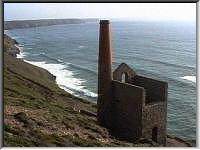The S.C.M.C. in Cornwall
Mining History & Exploration
The S.C.M.C. in Cornwall
Mining History & Exploration
Background
Since the early 2000s a lot of work has taken place to preserve and stabilise the mine sites and buildings in Cornwall. Prior to this work we followed the members of the Shropshire Caving and Mining Club as they explored the incomparable mining remains still to be found, both above and below ground to produce the massive DVD set "'Mongst Mines and Mine Explorers". Mainly recorded in 1993 it also features footage shot in 1983 and 1987 of sites that have since changed considerably.
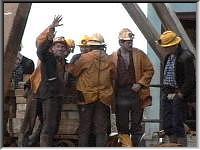
Most of the underground tours were recorded with revolutionary new "Borg" video equipment developed by IAR, which gives the viewer the feeling that they are exploring the mine themselves - this was well before the invention of 'Action Cameras', which seem to be worn by almost everyone today!
South Crofty Mine
We were very lucky to have had an underground tour of South Crofty tin mine while it was still working, and most importantly to be able to make a record of the visit.
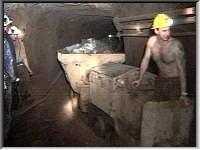
In the years leading up to closure South Crofty miners were working over 700m below the surface. To reach the working area it envolved an exhilerating descent of New Cook's Kitchen shaft to the '380 fathom' level, 695m (2,280 ft) below adit level (the descent was recorded in full, passing several levels in the shaft).
On the 380 fathom level, Clayton battery electric locos were used to haul Hudson tipping wagons full of ore, from the stopes where it blasted down, to an internal ore pass where the ore was dropped through a 'grizzly' (a screen that stopped large lumps going through) into a large crusher.
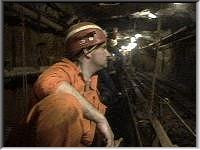
The bottom of the crusher was on the '400 fathom' level (731m, 2,400 feet deep). This was reached by descending the 1:4 gradient First sub decline. It was on this level where the ore was loaded from load drive drawpoints by rocker shovels, and sent to the shaft from hauling to surface in skips.
The party were able to return to the bottom of New Cook's Kitchen shaft the easy way, by usinga man-rider conveyor belt.
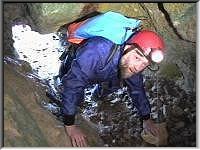
Cligga Head Mine
Cligga Head cliffs are pock-marked with mine level entrances, ancient and modern. With proper training a correctly equipped group can explore these workings underground, which we did with members of the SCMC in '93 and '94 using the Mk.1 'Borg' camera.
The geology is quite complex at Cligga Head, originally it was worked for tin, then in the 1930s and 40s tungsten. Blasting in the 1940s caused problems with sections of the cliff collapsing and damaging the surrounding mine structures and raising production costs.
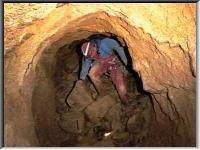
By 1945 regular shipments of cheaper tungsten from America had started to arrive in Britain, so Cligga was closed on economic grounds.
In the early 1960s an attempt was made at re-opening the mine by the Geevor Mining Company, but despite deepening Contact shaft to 168m (550 feet) and driving new levels, after encountering water and finding little workable ore the mine was abandoned again.
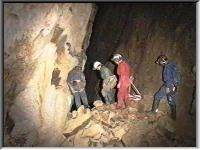
When tin prices rose in the 1970s and 1980s there was renewed interest in re-opening Cligga Head, but each time the subsequent collapse in the tin market puts an end to it.
For the modern mine explorer, roof falls often block the mine passages and the explorer has to resort to wriggling through small gaps and crawling over rock piles.
But, they eventually lead to vast stopes where the minerals have been removed over the centuries.
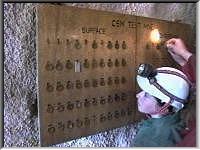
Visiting Mines
On a visit to a modern, working mine it is much easier to move around underground, but safety procedures, such as keeping a tally of who is in the mine, must be followed. Usually when miners collect their lamp at the start of a shift they are given 2 tallies (like coins or tokens). One is given to the banksman at the top of shaft as the miner enters the cage to go down and the other handed to the banksman at the end of the shift when the miner leaves the mine. The tallies are kept on a special board with hooks which shows at a glance who is still in the mine and who has come out.
Tally boards are also used underground at the entrance to 'blind' headings to keep track of the numbers of men who might be in that level. In the case of an emergency the rescue team can see how many workers are in there.
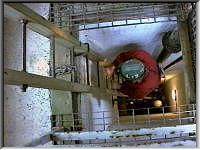
Not all mines were entered via a shaft and cage. In some mines the workforce had to use 'climbing shafts'. These are shafts, fitted with a series of fixed ladders, usually in about 8m (25ft) lengths. It was not unusual for miners to have to climb over 120m (400ft.) on ladders, particularly in metal mines. Sometimes the miners could go so far down in the cage, then climb ladders to reach their workplace.
When exploring abandoned mines, many of the old miners ladders have collapsed or are unsafe, so the modern explorer has to rig ropes for abseiling and prussiking and needs to be fully conversant with rope access techniques.
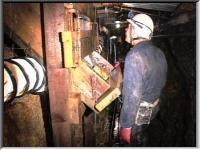
In the older Cornish tin and copper mines the remains of ore chutes or passes can be found. These are wooden chutes into which the ore is dropped from higher workings. By lifting the door on the ore chute the material can be loaded into wagons running along the level.
Surface remains
Cornwall has an impressive range of mining remains on the surface, from abandoned engine houses and chimneys to processing and dressing mill sites, all of which are in stunning scenery and are easy to see and visit from public footpaths.
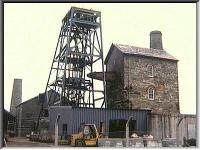
There are several mining museums such as the award winning King Edward Mine Museum which has daily working demonstrations of the processing machinery at its mill. At Levant Mine, near St. Just the National Trust has a working 1840s beam winding engine - the world's only Cornish beam engine still operated by steam on its original site (the mine was about 600m deep and went under the sea).
Guided tours of the massive 1854, 80" Cornish beam pumping engine (the last Cornish Engine to work on a Cornish Mine at Robinson's shaft, South Crofty Mine, Redruth can be arranged at the Heartlands Visitor Centre.
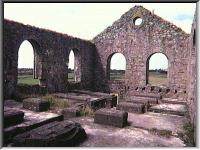
Over the last few years the vast majority of the mine sites and buildings have been conserved, with the old mineral tramways being turned into cycle routes and footpaths.
When the mines were working the owners were often very proud of them and built ornate buildings, such as this one at Wheal Basset. It housed the dressing machinery which processed the veinstuff, removing unwanted material and concentrating the valuable ores. King Edward Mine Museum has working examples of the machinery that would have been here.
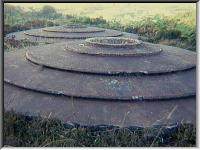
Remains can be found in many places. These circular convex buddles were lying neglected behind a wall in Brea.
Buddles are designed to separate ore (such as tin ore) from lighter waste material. Ore bearing rocks from underground are crushed to a fine powder which is mixed with water and dropped slowly on to the middle of a circular buddle. Sweeps, usually made from gorse bushes agitate the water mixture so that lighter material is washed to the edge of the buddle while the heavier ore particles build up on the slope of the buddle. After a period of time the concentrated ore can be removed from the buddle to either be smelted or processed further.
Circular buddles can be convex (as here) or concave.
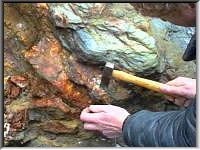
Despite thousands of years of mining, Cornwall is still rich in minerals and is a valuable resource for geologists.
If you are interested in minerals it is well worth visiting the various mining musuems which have some impressive mineral collections.
Many of the specimens were collected from deep underground when the mines were working and were often used as teaching aids to help the miners and engineers recognise the best ore.
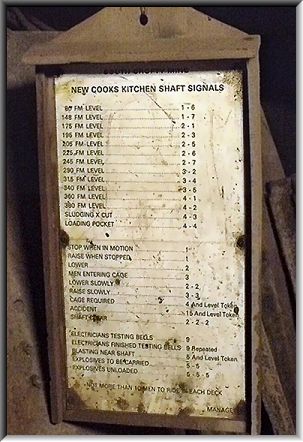
With the closure of South Crofty, tin is no longer mined in Cornwall, although there have been several attempts at re-opening at least one of the mines in the past 20 years, but it costs a lot of money to develop a mine. Hard rock mining has always been subject to 'boom and bust' as speculators play with the metal prices, and one day it may revive.

Since 2006, Cornwall has been part of the Cornwall and West Devon Mining Landscape UNESCO World Heritage Site.
The substantial remains in this area are a testimony to the contribution Cornwall and west Devon made to the Industrial Revolution in Britain and to the influence it had on the mining world at large.
So whether you are interested in the geology, the social history of the mining industry, or the huge technological advances that the industry brought about, there is plenty to see and discover!
The images on this page are taken from the Production - "'Mongst Mines and Mine Explorers".
Find out more about the Shropshire Caving and Mining Club on their web site: www.shropshirecmc.org.uk

